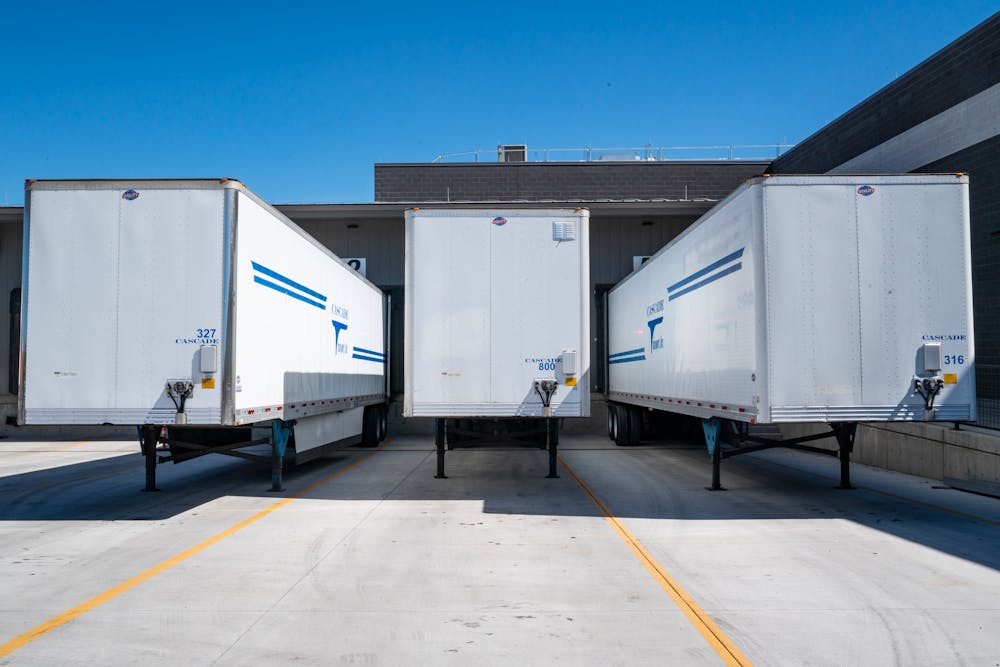Business
Scaling Your Online Business? Don’t Ignore These Logistics Pitfalls

The growth of eCommerce has opened new doors for entrepreneurs everywhere. Online businesses are scaling faster than ever, reaching wider markets and attracting more customers with ease. But as your business grows, so do the complexities that come with managing operations behind the scenes.
One of the most overlooked challenges in this phase is logistics. Many business owners stay focused on marketing and sales, assuming the backend will somehow catch up. That mindset can lead to delays, lost revenue, and frustrated customers. Logistics forms the backbone of every online business, and poor planning in this area can quickly lead to breakdowns that stall growth.
When you’re trying to scale, it’s tempting to move fast and react to demand as it comes. But without the right logistics strategy in place, what starts as growing pains can snowball into major disruptions. This article explores some of the most common logistics pitfalls that can silently hold your business back—and how to address them before they do.
Logistics Infrastructure: Don’t Underestimate Your Storage and Transport Needs
As your order volume climbs, your business will need more than just space to store products. You’ll also need faster transport, better handling, and a more structured fulfillment process. One of the early signs that your logistics can’t keep up is frequent delays in shipping or warehouse clutter that slows everything down.
Relying on rented storage facilities or temporary transport arrangements might work in the short term. But long-term growth requires a more flexible and scalable solution. At this point, many businesses start looking into alternative options that can support high inventory turnover without expensive commitments.
One cost-effective way to add capacity is to explore shipping containers for sale. These containers can serve as mobile storage units or be modified into semi-permanent inventory spaces. They’re durable, weather-resistant, and often more affordable than leasing additional warehouse space. This approach helps growing businesses adapt without tying up too much capital in large facilities.
Choosing the right infrastructure early on helps avoid major slowdowns later. Whether it’s modular storage or improved transport options, having a solid logistics base gives you more control over how your business scales.
Inventory Management Errors
One of the quickest ways to lose momentum during growth is by losing track of your inventory. Overstocking leads to cash flow issues, while stockouts frustrate customers and damage your brand. When your business is scaling, manual tracking methods start to fall apart. Spreadsheets and guesswork don’t cut it anymore.
Automated inventory management tools are essential. They help you track products in real-time across platforms, identify trends, and spot errors before they affect customer orders. A missed order or miscounted product might seem small, but repeated issues quickly add up and hurt customer satisfaction.
Make sure your system can scale with your product catalog. The goal is to build a process that works even when order volumes double or triple in a short period. Syncing inventory across your website, marketplaces, and warehouses saves time and reduces mistakes. And when demand spikes, having reliable data helps you react faster without losing control.
Poorly Chosen Shipping Partners
As your order volume increases, so does your dependence on outside carriers. The shipping partner that worked when you had 10 orders a day might not be able to handle 500. Delayed deliveries, damaged packages, and a lack of support can ruin the experience for your customers. Worse, these issues can hurt your brand’s reputation.
Choosing a shipping partner isn’t just about rates. It’s about finding a provider that can scale with you and offer consistent performance across regions. Look into their network reach, delivery times, tracking systems, and support services. Speak with other merchants and read reviews. If your current provider shows signs of weakness as your volume grows, don’t wait for a major breakdown to make a change.
It’s also smart to diversify. Relying on a single carrier creates a bottleneck. Having a backup provider or regional alternative helps you avoid disruption if one network faces delays or outages.
Not Planning for Returns
Many online businesses get excited about outbound logistics—shipping new orders quickly and affordably. But what happens when a customer wants to send something back?
Returns are a standard part of online selling. If you’re not prepared for them, they can create chaos. From restocking to refund processing, each step takes time and resources. If your system is clunky or unclear, customers will lose trust. They may even decide not to shop with you again.
Create a clear, visible returns process. Use return labels, offer simple instructions, and work with reverse logistics partners if needed. Most customers don’t mind returning an item if the process is smooth. On the other hand, complicated returns make your business seem unreliable.
Think of returns as part of the customer experience. The way you handle them says a lot about your business. Planning for them ahead of time helps you avoid backlogs and keeps customers happy.
Inconsistent Order Fulfillment
Another major issue during growth is inconsistent order fulfillment. This shows up in missed shipping deadlines, wrong items sent, or slow order processing. These mistakes usually stem from poor systems or overworked teams.
When sales go up fast, it’s easy for your existing setup to fall behind. A few manual errors are understandable, but if mistakes happen regularly, your fulfillment system is likely stretched too thin.
Using barcode scanners, fulfillment software, or working with third-party logistics providers (3PLs) can improve speed and accuracy. These tools help reduce human error, manage order flow, and handle spikes in demand without compromising quality.
You don’t have to outsource everything, but you do need a process that works under pressure. Fulfillment is where your logistics come to life. If this step breaks down, all the marketing and selling you’ve done is wasted.
Growth is exciting, but it also brings responsibility. Logistics isn’t just a background process—it’s a key part of your customer experience. Every order shipped, returned, or restocked reflects on your business.
Staying ahead of logistics problems means thinking long-term. Build systems that can stretch with your goals. Find partners who support you at every stage. And most importantly, don’t wait for something to go wrong before you make changes.
The path to a bigger business is full of opportunities. Avoiding these common pitfalls makes that journey smoother and more sustainable.

-

 World1 week ago
World1 week agoEthiopian volcano erupts for first time in thousands of years
-

 Legal5 days ago
Legal5 days agoUtah Amber Alert: Jessika Francisco abducted by sex offender in Ogden
-

 US News4 days ago
US News4 days agoExplosion destroys home in Oakland, Maine; at least 1 injured
-

 Health5 days ago
Health5 days agoMexico’s September human bird flu case confirmed as H5N2
-

 Health11 hours ago
Health11 hours ago8 kittens die of H5N1 bird flu in the Netherlands
-

 Legal2 days ago
Legal2 days ago15 people shot, 4 killed, at birthday party in Stockton, California
-

 World5 days ago
World5 days agoWoman killed, man seriously injured in shark attack on Australia’s NSW coast
-

 Health4 days ago
Health4 days agoMarburg outbreak in Ethiopia rises to 12 cases and 8 deaths




